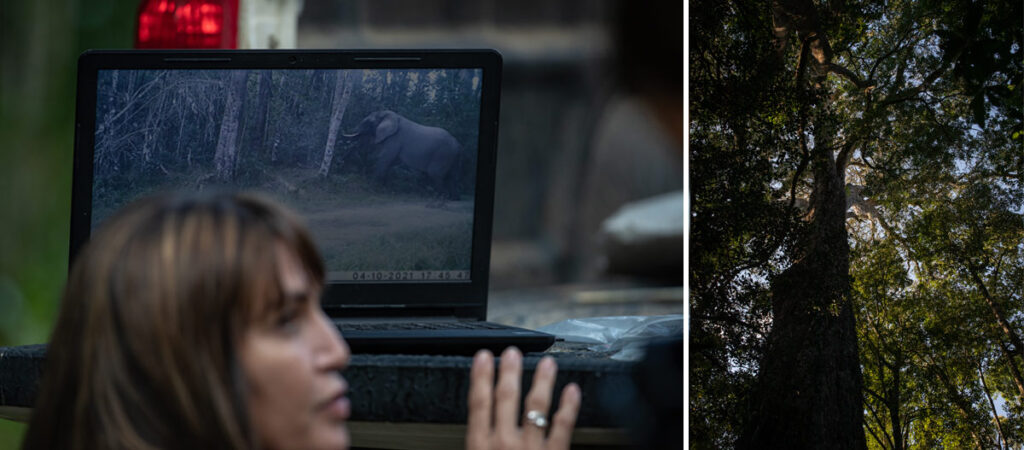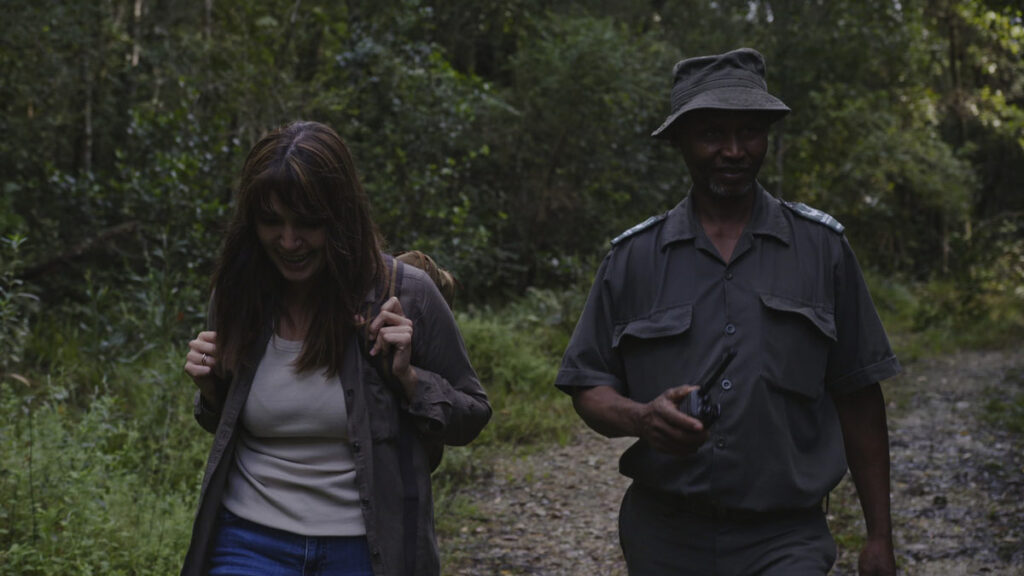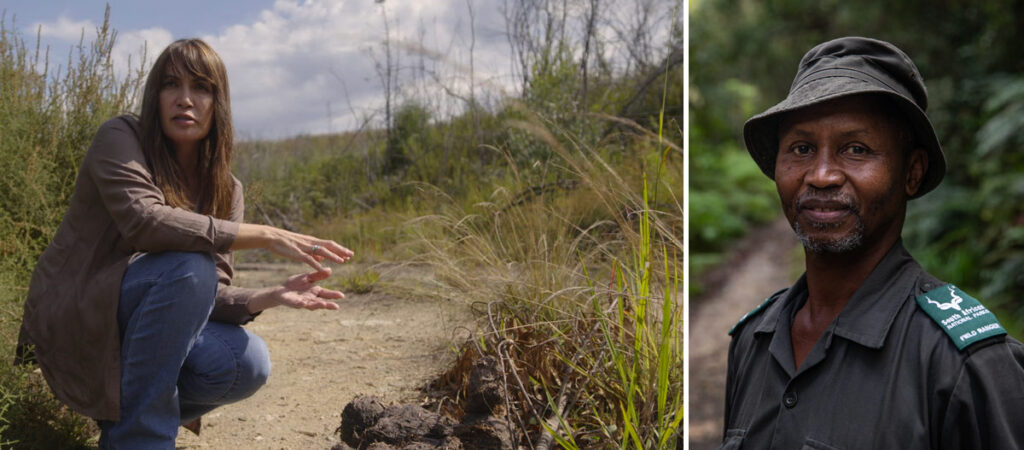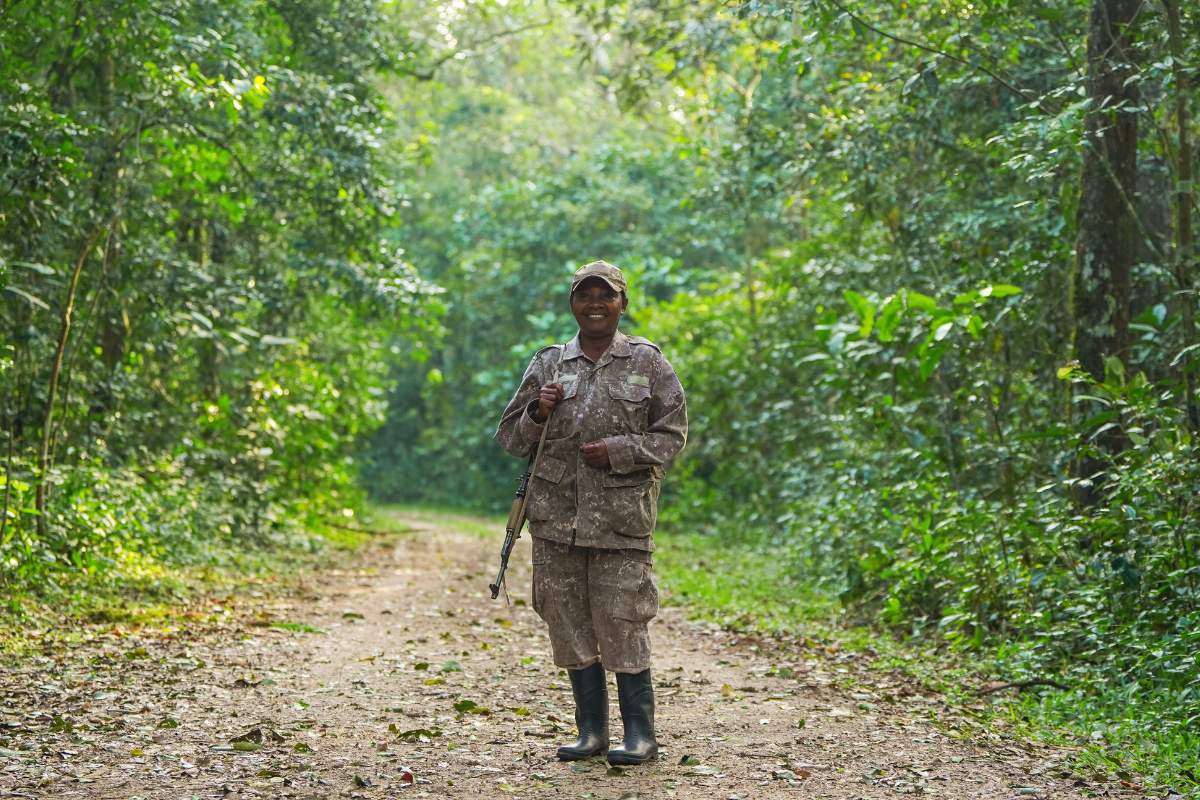At the heart of the Knysna forest elephant enigma in South Africa, one woman stands as a beacon of hope for the last remaining Knysna elephant – Lizette Moolman. With a background in wildlife ecology and conservation biology, Lizette completed an intensive camera trap study that revealed there is only one elephant left in the Knysna forest.
After completing her studies in Biochemistry and Conservation Biology at the University of KwaZulu-Natal, Lizette embarked on a path that ultimately led her to become deeply entrenched in the conservation efforts of South Africa’s treasured wildlife. Her tenure as the Elephant Research Project Coordinator at Tembe Elephant Park and subsequent roles at SANParks equipped her with invaluable experience in wildlife monitoring and research.

Often referred to as the “ghost herd,” the elephants of the Knysna forest developed an uncanny ability to stay out of sight, and over the last few decades, only a handful of people have encountered signs of their existence. It wasn’t until 2014, amid a leopard research study conducted by The Landmark Foundation using camera traps, that clear footage of a wandering elephant was first captured. This sparked Lizette’s unwavering dedication to understanding and protecting this elephant population. Lizette and her devoted team sprang into action, deploying a total of 80 cameras throughout the forest, meticulously compiling an extensive catalogue of sightings.
To their profound disappointment, her team confirmed in 2015 that the elephant captured by all the cameras was indeed the same individual. She was identified by several markers, one of which was the distinctive mark that led to her being nicknamed “Strangefoot” or in Afrikaans “Oupoot”.

Male elephants, or bulls, are often recognised for their inclination to break away from the herd and lead solitary lives for extended periods. In stark contrast, female elephants, or cows, typically remain within their herds from birth throughout their entire lives and never live alone, even for short periods of time. Her solitary existence has raised serious concerns about her well-being, prompting Lizette to explore solutions to alleviate her loneliness and stress.
However, the task at hand is not without its challenges. The Knysna forest, spanning over 568 square kilometers, presents a formidable environment with its dense vegetation, making it difficult to conduct research. The work on the ground, such as setting up camera traps in the forest is incredibly difficult and time-consuming.
The significance of the Knysna elephant cannot be overstated. Once thriving in its natural habitat, centuries of hunting and habitat loss have brought it to the brink of extinction. She carries the trauma of losing her family, and there are visible signs that she is lonely and stressed.

Lizette recognises the invaluable knowledge this elephant possesses about surviving in this indigenous forest and the urgent need to safeguard its legacy through carefully planned conservation efforts.
Community engagement plays a pivotal role in Lizette’s conservation endeavors. Conducting surveys to understand local perspectives, she seeks to foster a collaborative approach that respects both human livelihoods and wildlife conservation.
In her quest to ensure the survival of the Knysna elephant, Lizette has worked closely with seasoned SANParks Trackers, Karel and Wilfred, who brought decades of expertise in helping to monitor and research this magnificent creature. Wilfred has since retired. Together with the SANParks Rangers, she carefully navigates the delicate task of observing and monitoring the elephant’s health and behaviour, and researching the next steps when it comes to a potential elephant reintroduction into the Knysna forest.

Lizette’s unwavering commitment to conservation stems from her belief that elephants, like all wildlife, deserve space to thrive. As she tirelessly advocates for the introduction of new elephants into the Knysna forest, she remains cognisant of the risks and benefits involved, always prioritising the welfare of this gentle giant.
In a world where human-wildlife conflict threatens the very existence of species like the Knysna elephant, Lizette Moolman stands as a testament to the power of dedication, compassion, and unwavering resolve in the face of adversity. She has been instrumental in the fight to save this species in this area. And it is not just about this one elephant but the ecosystem at large, and she has truly worked hard to understand the situation and determine a path forward that is careful, well-researched, and will hopefully enable us to save the Knysna elephant population.
Lizette has written a number of publications:
- Height-related detection bias in camera trap surveys: Insights for combining data sets
- Morphology of Pleistocene elephant_tracks on South Africa’s Cape south coast and probable elephant trunk-drag impressions
- The decline of the Knysna elephants: Pattern and hypotheses
- And Then There was One: A Camera Trap Survey of the Declining Population of African Elephants in Knysna, South Africa
In March 2024, SANParks issued a press statement detailing their commitment to adopting an evidence-based approach to safeguard the future of the last elephant in the Knysna forest, signaling a proactive strategy for managing potential future reintroductions.
SANPARKS Press Release: https://www.sanparks.org/news/sanparks-pursues-evidence-based-approach-on-knysna-elephant

Reintroducing elephants to the Knysna forest is not a simple exercise, and like any significant conservation effort, it will require time and collaboration from various experts and organisations.
Please share this film and help us educate as many people as possible about her work and the last remaining Knysna elephant.



